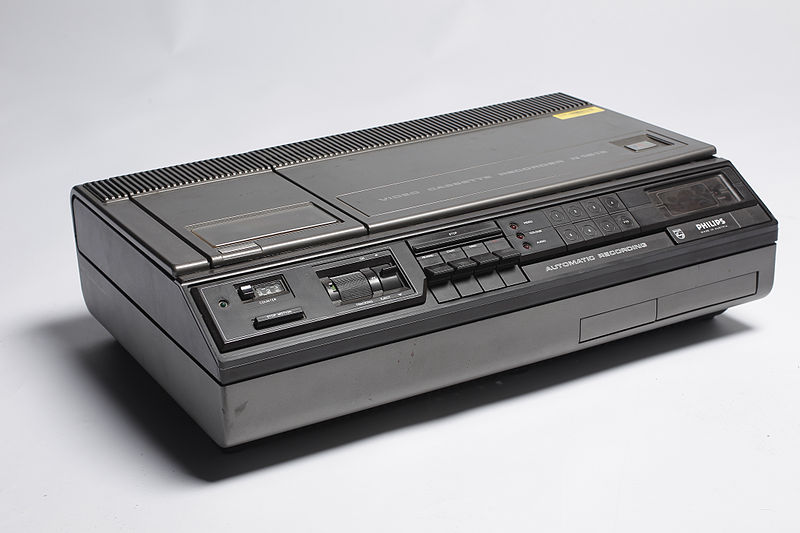Today it is hard to imagine that there was a time when we couldn’t record TV programmes or create our own video footage but there was and it wasn’t that long ago. I can still remember the excitement that ensued when the first video recorders started appearing. Being able to record and keep TV broadcasts seemed really out there and technologically brilliant but initially the equipment was extremely costly and beyond the means of most people.
The Video Recorder
My father was an early adopter of the VCR and probably more from luck than judgement chose a VHS model. The rival Betamax format vied with VHS for some time but eventually dropped off the map. Our first family recorder cost an arm and a leg but seemed like a miracle to me. It was a Hitachi and in those days a Japanese brand meant you were getting the best equipment. Indeed Japan was so synonymous with electronic and engineering excellence that it is doubtful whether anyone would have knowingly risked an investment in goods from anywhere else which is brings me to that question of what’s in a Japanese name. In the eyes of audio-visual technology retailers back in the 70’s and 80’s the answer was everything.
Matsui
My first VCR was a Christmas present and one of the most exciting that I ever received. It was a gift from my parents who had bought the machine in Currys. A Hitachi model like theirs was a little too costly and so they chose a Currys own brand number. The brand in question was Matsui which looking back sounded more like an exotic martial art or a takeaway dish than a piece of electronic wizardry!
Turning Japanese
The advertising tag line for the Matsui brand was “Japanese technology made perfect”. What could be better than perfect Japanese technology at a great price? There was nothing wrong with my VCR and it served me well but Japanese it certainly was not. Millions of people were duped into thinking they had Japanese technology when in fact none of the components in any Matsui equipment were from Japan and the goods were assembled in the UK. Currys had correctly surmised that a Japanese sounding name would ensure the success of the brand and that anything else might doom it to failure.
Foreign Names
Of course Curry’s were not the only organisation to jump on the Japanese bandwagon and brand names today are often chosen because they sound like they are from somewhere synonymous with excellence in a certain field. Dolmio sauces are a good case in point. If you want to make a good Bolognaise then you would be attracted to Italian brands but Dolmio is actually Australian. Haagen Dazs Ice cream is not Scandinavian it is American and those pillars of Teutonic chic, Möben, are actually English.
Japanese sounding names are still used too. Japan has rather dominated the fishing tackle industry in recent years. It all started with an illustrious manufacturer of bicycle components using their precision engineering skills to move into fishing reels. Shimano fishing reels grabbed a huge slice of the market, Daiwa followed and then there was Okuma except that Okuma are not Japanese, they are Taiwanese with a founder called Chang. Would anglers have bought reels from a company called Chang? Who knows. First it was VCR’s now it is fishing tackle and so the answer to the question what’s in a Japanese name? is simple – money!
Byline
Article by Sally Stacey

